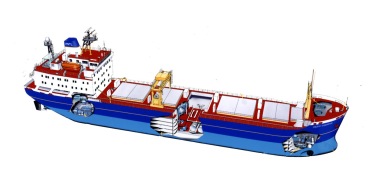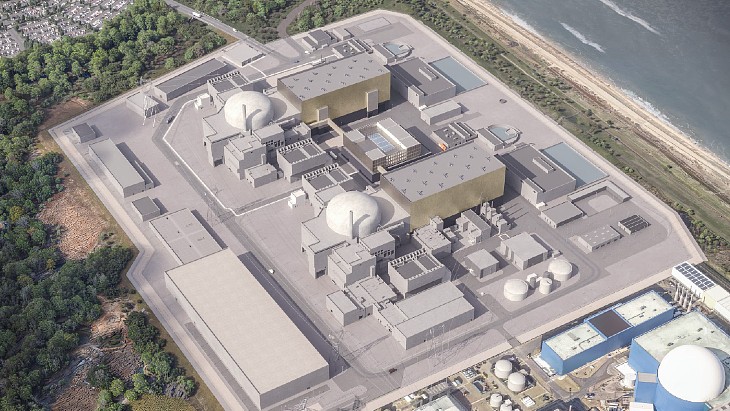Companies have confirmed that a shipment of mixed oxide (MOX) nuclear fuel from Europe to Japan is being prepared, although the exact departure date has not yet been announced.
The shipment will comprise two vessels travelling in convoy from either France or the UK. The country of the departure port will be announced "some days" prior to departure, according to a statement simultaneously released by the French, British and Japanese companies involved in the shipment. The exact departure date, the route to be taken, the approximate arrival date in Japan, the name of the departure port and the names of the vessels and the cargo itself will be announced one day after the shipment sets sail.
|
| PNTL uses its own specialised fleet for plutonium and MOX transport (Image: PNTL) |
Companies from three countries are involved in the shipment. Areva of France manufactured the MOX. The UK's Pacific Nuclear Transport Limited (PNTL), a subsidiary of International Nuclear Services which is itself owned by the UK's Nuclear Decommissioning Authority (NDA), will transport the fuel to Japanese utilities Chubu, Kyushu and Shikoku.
The plutonium content of MOX fuel means that its shipment requires extra levels of security, and past MOX shipments have attracted much media interest and sometimes protests because of the perceived proliferation risk attached to the material. Two of PNTL's purpose-built nuclear transport vessels - Pacific Pintail and the company's newest ship, Pacific Heron - are equipped with the security features including fixed naval guns and other additional physical protection systems necessary for the transport of MOX and plutonium dioxide.
Three routes are used for nuclear material transports between Japan and Europe: the Panama Canal, Cape Horn, and Cape of Good Hope. The voyage typically takes six to eight weeks to complete and the ships are capable of completing each voyage without having to stop at any port en route.
MOX fuel, as its name suggests, is a mixture of plutonium and uranium oxides, containing around 5% plutonium recovered from used reactor fuel by reprocessing. Recycling the plutonium produced during the irradiation of fresh fuel in a nuclear reactor in this way increases the amount of energy produced from the original uranium by 12%. If unfissioned uranium is also recovered and reused the figure increases to 22%. The process also allows the separation of the most highly radioactive fission products, meaning the volumes of the most dangerous wastes is reduced by over 60%.
Japan's energy policy calls for widespread use of plutonium recycling. Its own Rokkasho reprocessing plant is due to start operation soon, but up until 1998 used fuel was shipped to Europe for reprocessing and fabrication into MOX. So far Japan has received three shipments of reprocessed plutonium from Europe - one of plutonium oxide for use in its prototype fast breeder reactor and two of MOX. However, no MOX has yet been loaded into Japanese reactors, although it has been widely used in European reactors since the 1980s.





_42372.jpg)
_37521_70699.jpg)


_76087_55556.jpg)



